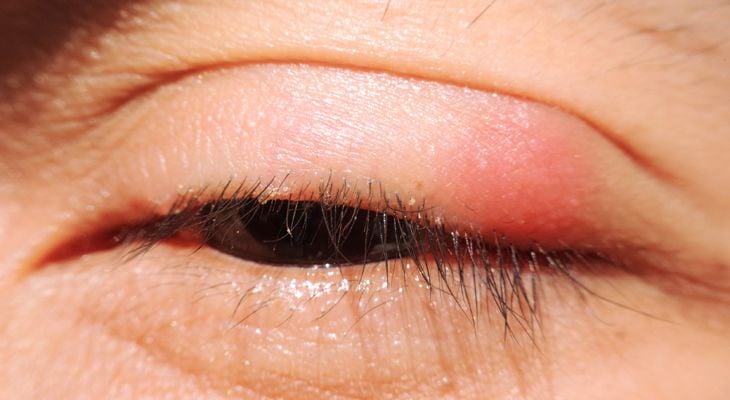
Stinging, irritated eyes, and blurred vision may indicate nothing more than a case of blepharitis -- an unpleasant but, in most cases, relatively harmless condition. Blepharitis is a chronic eyelid inflammation caused by a variety of irritants and/or the inability to maintain proper eye lubrication. In some cases, bacterial infection may be involved. If you suffer from this annoying problem, don't feel obliged to live with it -- see your eye care professional to discover the cause of your blepharitis and get advice on how to relieve yourself of it.
Blepharitis may take one of two forms, anterior (toward the front of the eyelid, where the eyelashes begin) and posterior (on the inner edge of the lid). You may even have both types of blepharitis at the same time. Anterior blepharitis often occurs when dandruff flakes, allergens, or bacteria irritate the eyelid and eyelashes. Posterior blepharitis is the result of a failure on the part of tiny glands within the eyelid, known as meibomian glands, to produce sufficient lubrication between the eyelid and the cornea of the eye.
Typical symptoms of blepharitis include the formation of crusts along the eyelids, eye pain, redness, oozing, abnormal tear formation, irregularities in the arrangement of your eyelashes, and a tendency for the eyelids to stick together.
Getting Relief from Blepharitis
The good news is that most cases of blepharitis are more annoying than dangerous. While extreme cases may require medical treatment to prevent possible damage to the cornea, your eye care professional can recommend several simple home care practices you can adopt to keep this recurring problem at bay. These may include warm compresses, commercial eyelid cleansers, anti-dandruff shampoos, and artificial tears.
You may also be advised to stop wearing contact lenses or using eyeliner and eye shadow, since these practices can make people more prone to blepharitis. (Since blepharitis attacks tend to come and go, you may want to keep a pair of eyeglasses handy so you can continue to see clearly while treating the condition.) Even a massage of the outer eyelids can help relieve the condition.
No one enjoys the prospect of a chronic eye condition, but once you learn how to control your blepharitis instead of simply suffering with it, you will feel better both physically and emotionally. Contact your eye care professional for personal help and advice on this common yet irritating problem.
